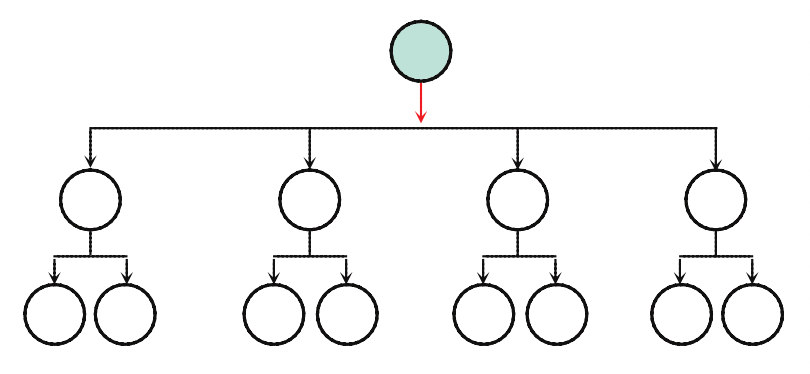Top-down hierarchy
Start at one, move down to many
Simple hierarchy diagram (1 parent, 4 children each with 2 children). The entry point (the parent) is blue, and the link to the next level of children has a red arrow pointing from the entry to the children.
Top-down hierarchy is intuitive to most of us because it’s the backbone of how we’re taught. We start with the simple. We then expand, back up, repeat, and expand again until we have a knowledge set, impressed on our memory through repetition and the stress urgency of testing.
What tends to happen when top-down hierarchy is the initiating architecture
- If people are filling in an architecture from the top-down, they usually start with an existing set of categories or a core precept. That set might expand, but the core set will often be set in stone.
- Hierarchy can also get set in stone because it gets successfully communicated; the more people who remember the placement a certain way, the more they react with anger when a preferred stability gets moved.
- When the population of people leveraging a hierarchy weren't part of the building of it, they can consider it 'pre-existing'. They consider it as containing the known universe, and stop considering all the unknowns.
- Only the data that fits is included, everything else is removed.
It starts from a point of simplicity, which is easier to teach and learn.
It can become something certain people use to impress the ideology implicit in the categories as "the (only) way it is." In other words, it can become a control: this is the way, you must conform.
This is mostly based on first- to third-person watching. It’s been influenced by library studies, UX, history, sociology, anthropology, and culture clashes.
top-down:
core precepts, learning, memory
core precepts, learning, memory
